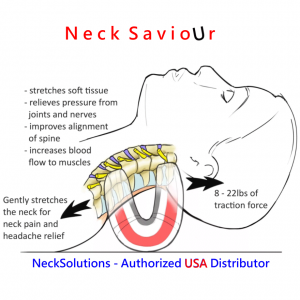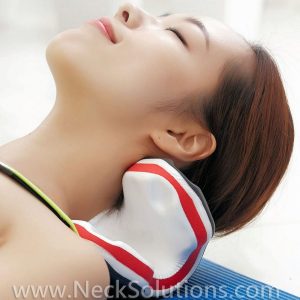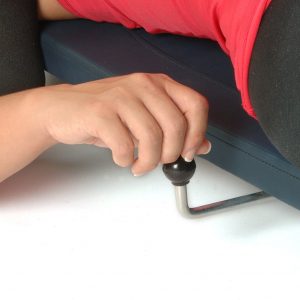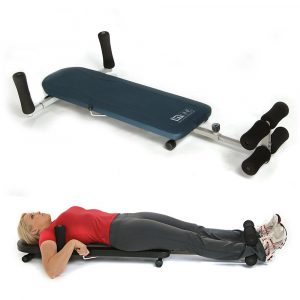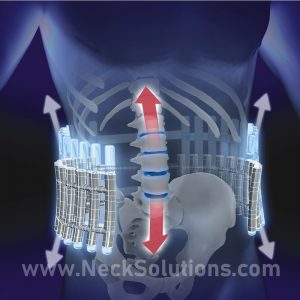Best Traction Device For Neck & Back Pain
Osteoarthritis is the most common form of arthritis and commonly affects the neck and lower back. It is associated with with pain, stiffness and loss of motion. Traction is a common form of therapy to decompress spinal segments in the cervical and lumbar spine for pain relief.
The Problem
As we age, the discs in our spine begin to degenerate. This can be a result of typical aging or as a chronic response to to injuries or conditions like Modic changes and relates to a rapid process of degenerative disc disease. As the disc degenerates, it loses height due to loss of water content.
The loss of fluid or dehydration of the disc causes the spinal bones to approximate or compress. This can result in pain from pinched nerves, bulging or herniated discs, jamming of joints, and inflammation. From a biomechanical perspective, it is a force that decompresses the spine, removing the cause of irritation and allowing the discs to re-hydrate.
The Solution
Because discs rehydrate when forces of gravity are removed, like after a night’s sleep, therapy directed to rehydrate discs are shown to improve function and alleviate pain. Studies show a reduction of pain associated with rehydration of spinal discs.
 The method of transportation of water into the disc is called diffusion. Rehydration is the method where important nutrients get into the disc along with the water. It has been shown to promote disc hydration and has been used for years as a conservative therapy for spinal problems.
The method of transportation of water into the disc is called diffusion. Rehydration is the method where important nutrients get into the disc along with the water. It has been shown to promote disc hydration and has been used for years as a conservative therapy for spinal problems.
Beneficial effects include disc height recovery due to rehydration and opening the space through which nerves travel. Through the reduction of nerve pressure and allowing nutrients to enter the disc, disc cells can grow and nerves can heal.
A 2019 study in the Journal of Manipulative & Physiological Therapeutics indicates traction to be effective for change in spine height after loading forces among individuals tested. The average height gained was 8.60 mm.
As arthritis progresses with age, the normal mechanism of hydration is lost and problems may develop that often become chronic or persistent. Therefore, decompression is a popular method to help restore disc health as well as relieve pain.
Types Of Traction
There are two basic methods used to apply forces. One method is static, where a force is held for a period of time, often 10 minutes or more. This can be done with devices that hold the neck or back in one position. The other method is intermittent, where the force is alternated between application and removal of application. This is often done for 10 seconds, then removed, and applied again for a number of repetitions.
It is thought that intermittent traction or disc pumping is best for rehydrating discs. However, this is not always the case. In fact, the older your are or the more arthritis you have, the more likely you are to respond to static traction – held force. The response to pumping the disc intermittently decreases as progression of arthritis increases.
The Best Traction Type
Therefore, the best type of traction often depends on your age or specific condition. For static forces, benches or belts that hold traction are good for the lumbar spine or lower back. Devices that pump the disc allow a repeated application of force and can be a great benefit for younger or lower levels of arthritis. Inflatable collars are a great way to apply it to the neck and are best used for static forces.
Belts and collars that apply decompression must overcome the weight of the body or head respectively. Often, the most recommended form of decompression allows for lying down to remove the force of gravity, thereby eliminating a measure of compression during treatment.
Often, devices have the capability of performing both methods, with varying efficiency. It is not very practical to use a cervical collar that takes 40 pumps to achieve the correct force, then deflate and re-inflate a number of times. Units that use a low force and require a minimum amount of pumping are best for intermittent traction.
For the lower back, inversion tables offer a great way to do both static and intermittent applications. You can incline back and this removes gravity and allows a steady force using body weight when kept in one position. A great feature of inverting tables is that they permit a rocking motion that allows the force to be easily held and released.
So, What Is The Best Traction?
It depends on your specific condition. The more arthritis you have or the greater the level of degeneration, the better you will respond to static traction. The less amount of arthritis or degeneration you have, the more intermittent traction will benefit.
This is determined by age, but not age alone. This may necessitate advice from your health care practitioner. Arthritis usually begins in the third decade of life. However, there are instances where younger individuals may have greater levels of arthritis. Genetics and condition which promote early degenerative changes like injuries, poor posture or Modic Type 1 changes can be present. Conversely, there are individuals with more advanced age that have lower levels of arthritis. This may require imaging studies like x-rays to actually observe levels of arthritis and relate to specific areas of concern.
Additional References:
J Orthop Sports Phys Ther. 2010 May;40(5):256-64
J Orthop Sports Phys Ther. 2014 Jan;44(1):19-29
Spine (Phila Pa 1976). 2014 Apr 20;39(9):E550-6
Musculoskelet Sci Pract. 2017 Oct;31:1-8


